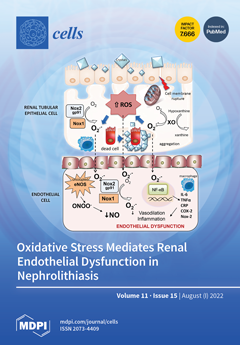We recently derived and validated a serum-based microRNA risk score (miR-score) which predicted colorectal cancer (CRC) occurrence with very high accuracy within 14 years of follow-up in a large population-based cohort. Here, we aimed to assess and compare the distribution of the miR-score
[...] Read more.
We recently derived and validated a serum-based microRNA risk score (miR-score) which predicted colorectal cancer (CRC) occurrence with very high accuracy within 14 years of follow-up in a large population-based cohort. Here, we aimed to assess and compare the distribution of the miR-score among participants of screening colonoscopy at various stages of colorectal carcinogenesis. MicroRNAs (miRNAs) were profiled by quantitative-real-time-polymerase-chain-reaction in the serum samples of screening colonoscopy participants with CRC (
n = 52), advanced colorectal adenoma (AA,
n = 100), non-advanced colorectal adenoma (NAA,
n = 88), and participants free of colorectal neoplasms (
n = 173). The mean values of the miR-score were compared between groups by the Mann–Whitney U test. The associations of the miR-score with risk for colorectal neoplasms were evaluated using logistic regression analyses. MicroRNA risk scores were significantly higher among participants with AA than among those with NAA (
p = 0.027) and those with CRC (
p = 0.014), whereas no statistically significant difference was seen between those with NAA and those with no colorectal neoplasms (
p = 0.127). When comparing adjacent groups, miR-scores were inversely associated with CRC versus AA and positively associated with AA versus NAA [odds ratio (OR), 0.37 (95% confidence interval (CI), 0.16–0.86) and OR, 2.22 (95% CI, 1.06–4.64) for the top versus bottom tertiles, respectively]. Our results are consistent with the hypothesis that a high miR-score may be indicative of an increased CRC risk by an increased tendency of progression from non-advanced to advanced colorectal neoplasms, along with a change of the miR-patterns after CRC manifestation.
Full article






